The following field trips are sponsored by Dr. Evan Preisser’s NSF grant in which SMILE is the educational outreach. Students are visiting locations around RI to learn about plant and herbivore interactions
Woonsocket East Farm
The East Farm Demo team enjoyed meeting and talking with the students from Woonsocket on September 21st. They got to taste some of the herbs and veggies and see Mother Nature’s creatures from the more than human world (a large spider) at work in the garden. They also learned how we interplant herbs and flowers to draw beneficial insects to the garden and keep pests away. They were respectful and polite and engaged. They seemed happy and were quite pleased to be taking apples back to their community. They all had fun!
Norman Bird Sanctuary
There were 16 students from Claiborne Elementary who hiked up to hanging rock on September 31st. The tour guide talked about the different habitats which we walked through (field, forest, ridge) and the plants and animals in each habitat. She explained a great deal about the rock formations, Pangia and how the world began and changed. The different types of rocks (igneous, sedimentary and metamorphic) and rock formations. The students had magnets and searched for magnate between the rocks on hanging rock. Everyone has a wonderful time!
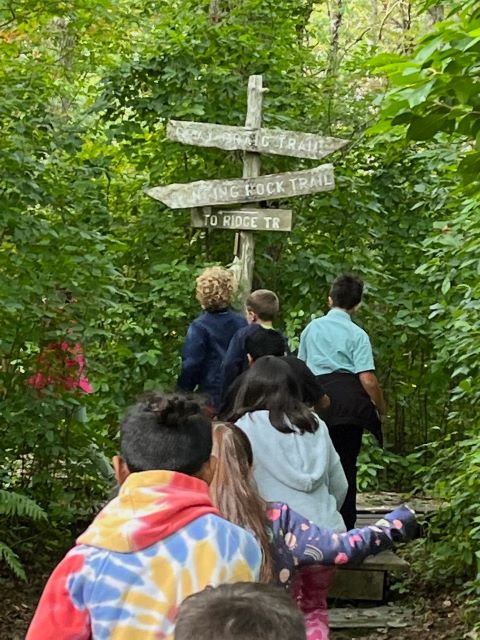
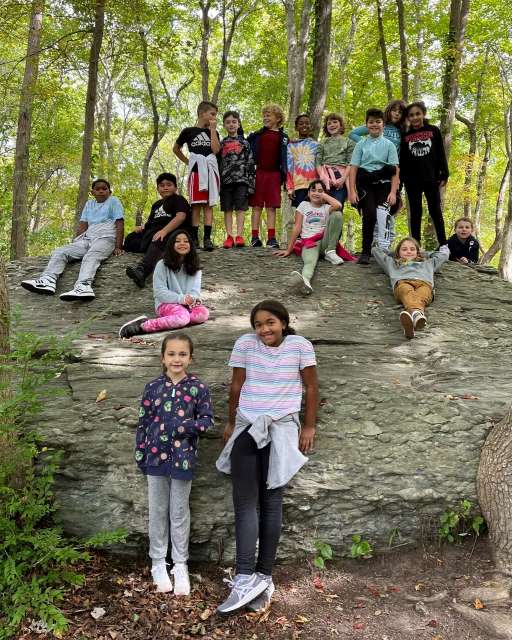
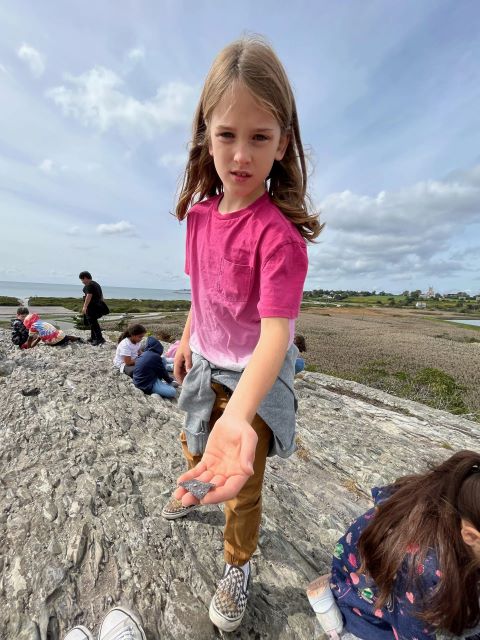
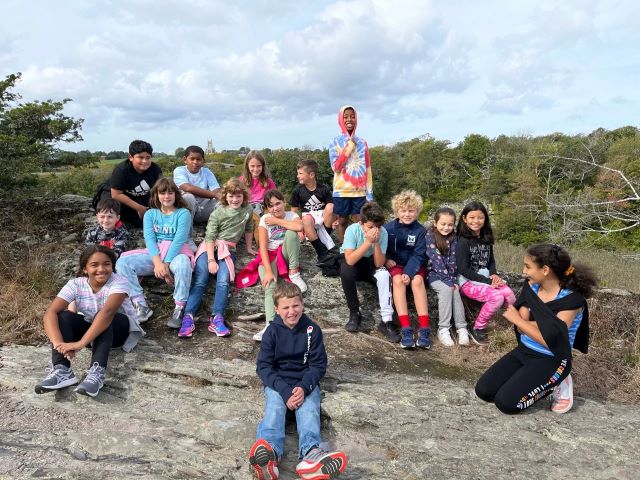
Westerly High School goes to East Farm!
The rain held off for WHS SMILE’s visit to the URI Master Gardeners’ tour at URI’s East Farm on Wednesday, October 5th. Although the garden was at the end of its growing season, we were given a tour by Anne in the Demonstration Garden. The students engaged in discussion about drought mitigation, soil nutrient recycling, and companion planting. This year the garden managed to produce thousands of pounds of donations to surrounding community food distribution centers. The students were encouraged to share some of their experiences about family gardens and ways to connect with gardens. “I think that we should work with the middle school (WMS) and help them with their garden so we can do this for our community,” said Katelin Daniewicz, senior.
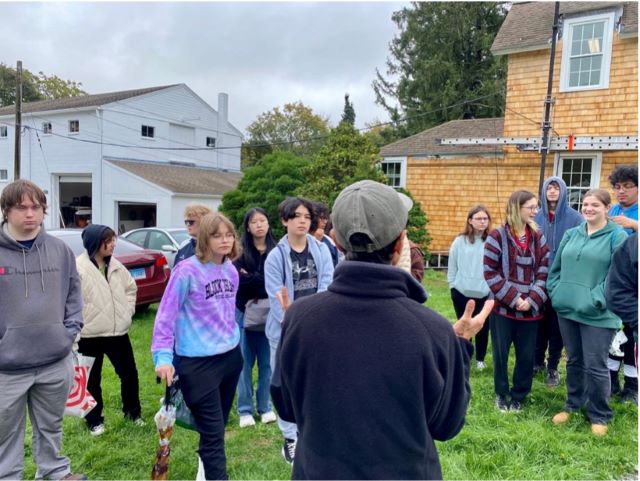
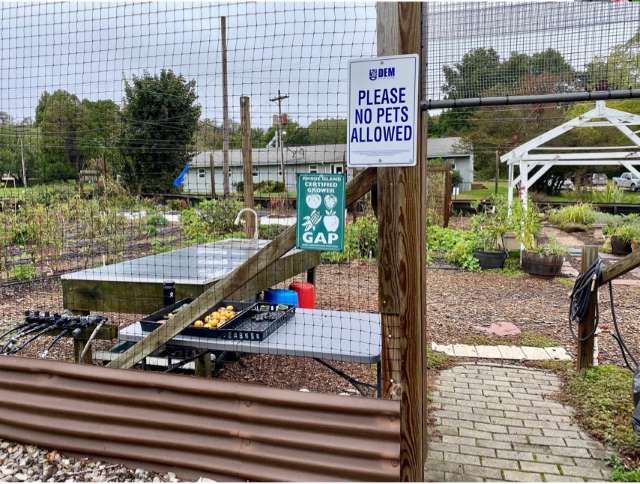
The next part of our trip was a walk through the fields of on-going URI experiments with blueberries, beekeeping, and, our destination, the apple orchard where we were met by Susan Axelrod, a master gardener volunteer who organizes the orchard volunteers. She explained how the orchard provides a living experiment for various aspects of fruit tree growing. One discovery this season was the use of tarps to help control fallen, rotting apples in order to control the yellowjacket population. This was successful along with an unintended consequence: the disruption of the life-cycle of a common pest in the orchard. That was not surprising given the amount of apples (and pears!!) on those trees! With Susans’s help, they are on their way to reaching last year’s crop yields and donating an amazing 14,000 pounds of various apples to farms and community food banks.
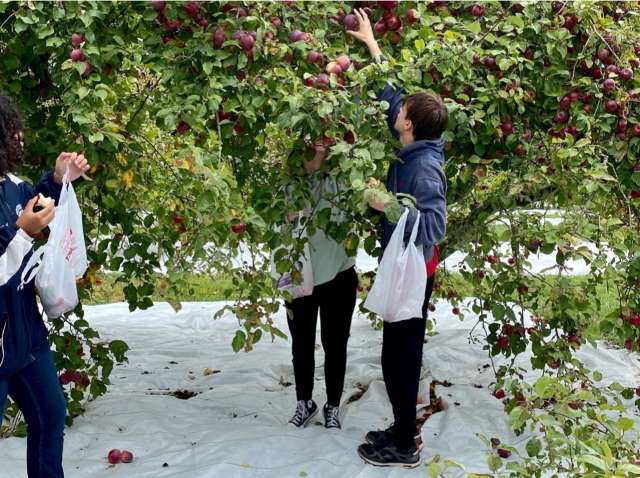
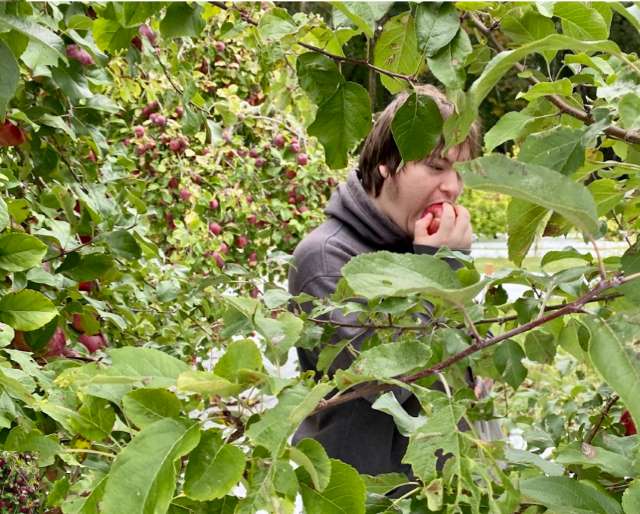
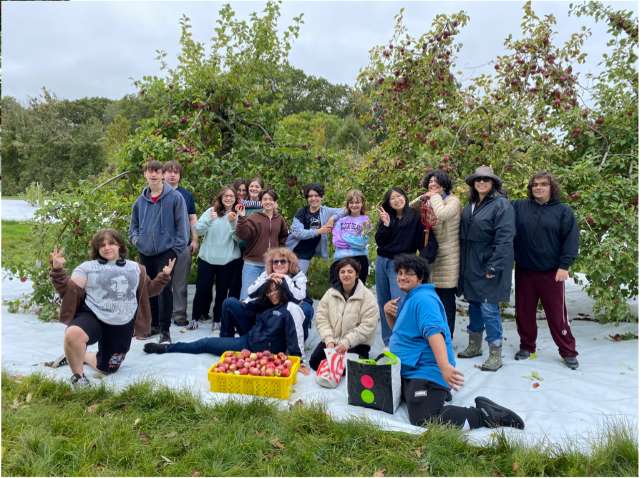
Students spent the rest of the time gathering a portion of apples for themselves, our school, and our community along with our fair share of immediate snacks! They were so thrilled with their haul and eager to share with family and friends, “My mother makes a great apple crisp and I can’t wait to bring her these,” said Gabby Young, senior. Underclassmen were already planning about when they will come back next year, “I have never been apple picking and it was really fun,” said Caesar Ponce, 10th grader.
